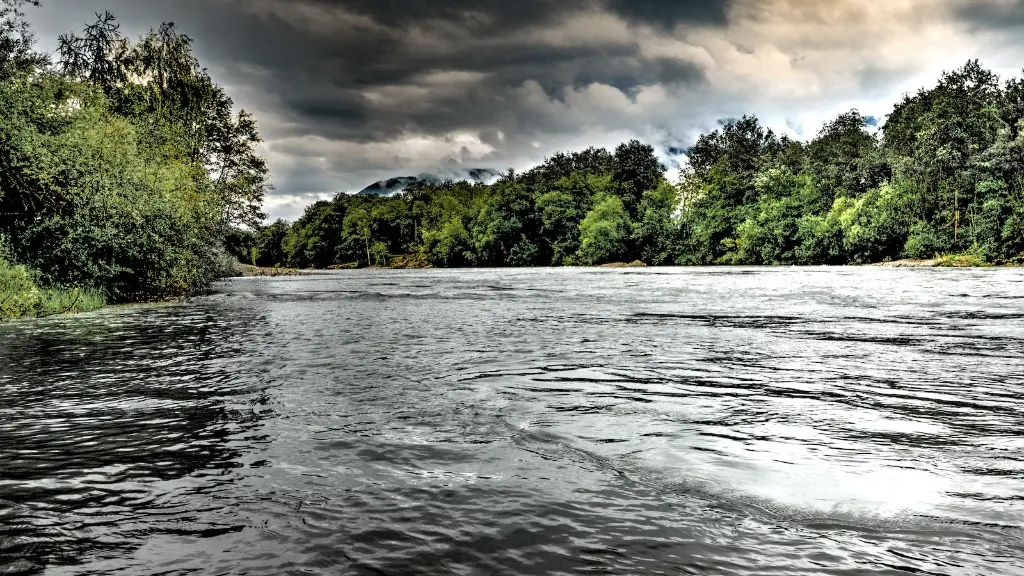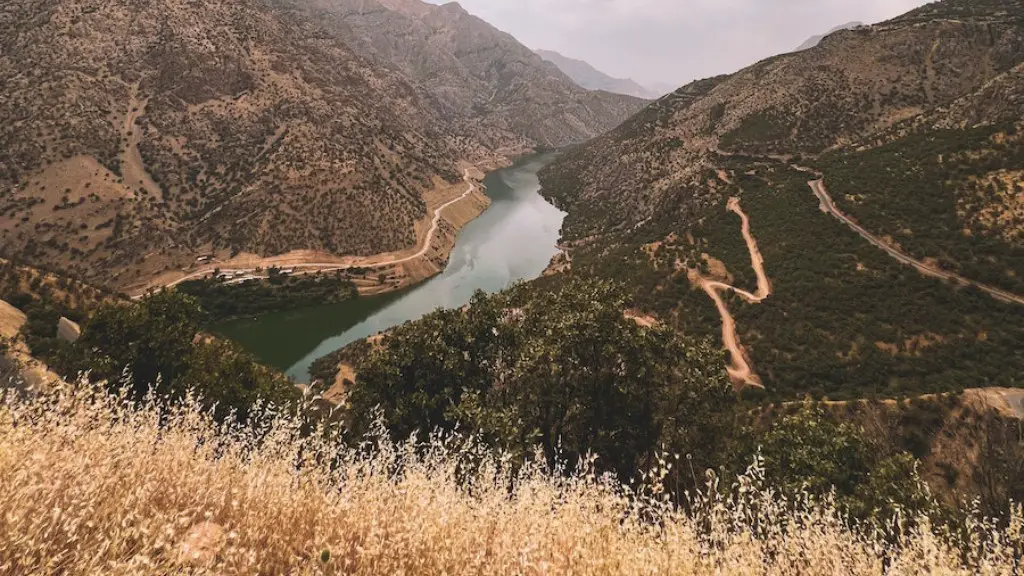The Yellow River Delta is located in Shandong province, China. The mouth of the Yellow River is located here, where it empties into the Bohai Sea. The delta is home to over 30 million people and is an important agricultural region.
The Yellow River Delta is located in the northern part of the Bohai Sea in northeastern China.
Where does the Yellow River start and end?
The Yellow River, also known as the Huang He, is the second-longest river in China. Originating in the Bayan Har Mountains in Qinghai province of Western China, it flows through nine provinces, and it empties into the Bohai Sea near the city of Dongying in Shandong province. With a length of 3,395 miles (5,464 kilometers), it is the sixth-longest river in the world. The Yellow River is an important waterway for both transportation and irrigation.
The Yellow River, located in China, is the second longest river in the country after the Yangtze River. The river is 5,464 kilometers (3,395 miles) long and originates in the Bayan Har Mountains in Qinghai province, western China. It then flows through nine provinces before emptying into the Bohai Sea near the city of Dongying in Shandong province. The river is an important water source for agriculture and industry in China and is also known for its frequent floods.
How was the Yellow River delta formed
In 1996, the Chinese government decided to intervene in the natural flow of the Yellow River. They did this by constructing a dam and redirecting the river’s flow. This had the effect of creating a new peninsula and filling in the old one. By 2009, the new peninsula was well-established and the old one had all but disappeared.
The Yellow River is one of the most important rivers in China and is considered to be the birthplace of the Chinese civilization. The river is also known as the “Mother River” and “the Cradle of the Chinese civilization” due to its important role in the history and development of China. The Yellow River is a symbol of the Chinese nation and its people and is deeply loved by the Chinese people.
Will the Yellow River dry up?
The Yellow River is one of the most important rivers in China, and its lower course is drying up every year. This is having a significant impact on industrial and agricultural production, as well as the livelihood of the people living alongside the river. The government is working on a plan to try and mitigate the effects of the drying river, but it is a daunting task.
The Huang He is the main river of northern China, and is the second longest river in the country after the Yangtze. It rises on the Plateau of Tibet and flows eastward, emptying into the Yellow Sea. The Huang He is an important source of water for irrigation and industry, and is also a popular tourist destination.
Can you drink the Yellow River?
The United Nations Environmental Program considers level five water to be unfit for drinking, aquaculture (such as fish farming and oyster farming), agriculture, and industrial use. Only 161 percent of the river water was rated level one or two, considered safe for drinking and household use. This leaves a large portion of the river water considered too polluted for any safe use.
There are many different types of snakes and turtles along the Yellow River. You may also see an alligator on occasion. Be careful when swimming or wading in the river, as there may be dangerous animals lurking below the surface.
Can you drink water from the Yellow River
The water in the Yellow River is very dirty and polluted. Over 338% of the river’s water sampled registered worse than level 5, meaning it is unfit for drinking, aquaculture, industrial use and even agriculture, according to criteria used by the UN Environmental Program. This is a very serious problem that needs to be addressed.
The Yellow River, one of China’s major rivers, is called the Yellow River because of the large amount of silt it carries. The silt isresponsible for the river’s yellowish-brown color, and when the river overflows, it often leaves behind a yellow residue. While the river helps create fertile land that is well suited for farming, it also frequently causes flooding.
What is a fact about the Yellow River?
The Yellow River is one of the most significant rivers in China and is often referred to as the “cradle of Chinese civilization”. The river is 3,395 miles (5,464 km) long and is the country’s second longest river, exceeded only by the Yangtze River. The Yellow River’s drainage basin is the third largest in China, covering an area of some 290,000 square miles (750,000 square km). The river has played a vital role in the development of Chinese civilization, providing a means of transportation, irrigation, and power for the country.
The large amount of sediment in a river is what gives the water its yellow colour. The colour of a river is due to the presence of sediments, including clay, silt, sand, and organic matter. The amount of sediment in a river is determined by the speed of the water flowing, the amount of rainfall, and the amount of erosion.
Why are there so many bodies in the Yellow River
It is estimated that most of the dead found in the Yellow River are suicide victims. Suicide is the cause of death for 85 percent of bodies found, with around 10 percent victims of accidental deaths and 5 percent representing dumped murder victims. The high percentage of suicide victims suggests that the Yellow River is a popular site for people to end their lives. The reasons for why people choose to commit suicide in this manner are not fully understood, but it is thought that the Yellow River is seen as a peaceful and natural place to die.
The lake is a great place to fish with a variety of fish including Musky, Panfish, Largemouth Bass, Northern Pike and Walleye. The maximum depth is 17 feet and there is a public boat landing for visitors to access the lake.
What is the myth of the Yellow River?
The legend of the history of China is a story that has been passed down for generations. It is a story of how the country was founded and how it has been able to survive and thrive over the centuries. The story begins with a great flood that threatened to destroy the land. A man named Gun was able to control the floodwaters temporarily by building dikes, but it wasn’t until his son Yu took over the project and taught the locals to dredge the river and channel the water that the problem was finally fixed. This legend is a reminder of the strength and resilience of the Chinese people, and it is a testament to the power of teamwork and perseverance.
The water pollution situation in China is dire. According to estimates, 80-90% of groundwater is not suitable for drinking, and half of China’s aquifers are too polluted for use in industry or farming. For river water, these figures are 50% and 25% respectively. This means that a large portion of China’s water supply is contaminated and unusable. This is a major problem for a country with such a large population.
There are a number of causes of water pollution in China. One of the main culprits is industrial waste. With China’s rapid economic growth, there has been a corresponding increase in industrial activity. This has led to more factories and businesses, and as a result, more industrial waste. Unfortunately, many of these businesses do not have proper waste management systems in place, and so this waste ends up in China’s waterways.
Another major source of water pollution is agricultural runoff. China is a major agricultural producer, and a lot of the pesticides and fertilizers used on crops end up in the country’s waterways. This pollution can have serious consequences for human health, as well as the environment.
The water pollution situation in China is very serious. It is essential that the country take steps to address this problem,
Final Words
The Yellow River delta is located in northern China where the river empties into the Bohai Sea.
The Yellow River Delta is located in the Shandong Province of China.





